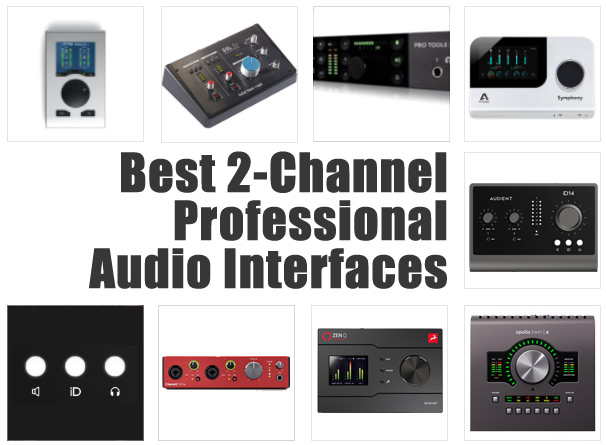The Best 2-Channel Audio Interfaces for the Serious Small Studio [UPDATED 2023]
The Rise of the Small-Format Interface
Audio interfaces have come an astonishingly long way since the dawn of the DAW.
Interfaces on the smaller and more compact end of the spectrum—including just 2 or so inputs—once mainly served hobbyists who were looking for a way to get their ideas down or make demos. But today, so many professional artists and producers are engineering their own productions at home, or even on-the-go in hotel rooms between tour dates using compact rigs.
Because of this, the demands on more compact audio interfaces have risen… and manufacturers have answered. It is now possible to get top-tier conversion, preamplification, impedance matching, advanced hardware modeling, and in some cases, pretty massive processing power—all from a unit that can sit unobtrusively on your desktop.
In this roundup we are going to take a look at some of the industry’s leading pro-level, small-format interfaces. We will restrict our list to those which start with the inclusion of 2 mic preamps, but it’s a large market, so the total number of inputs, outputs, and other specs will vary.
Here are our top picks:
The Best 2-Channel Professional Audio Interfaces
Universal Audio Apollo Twin X
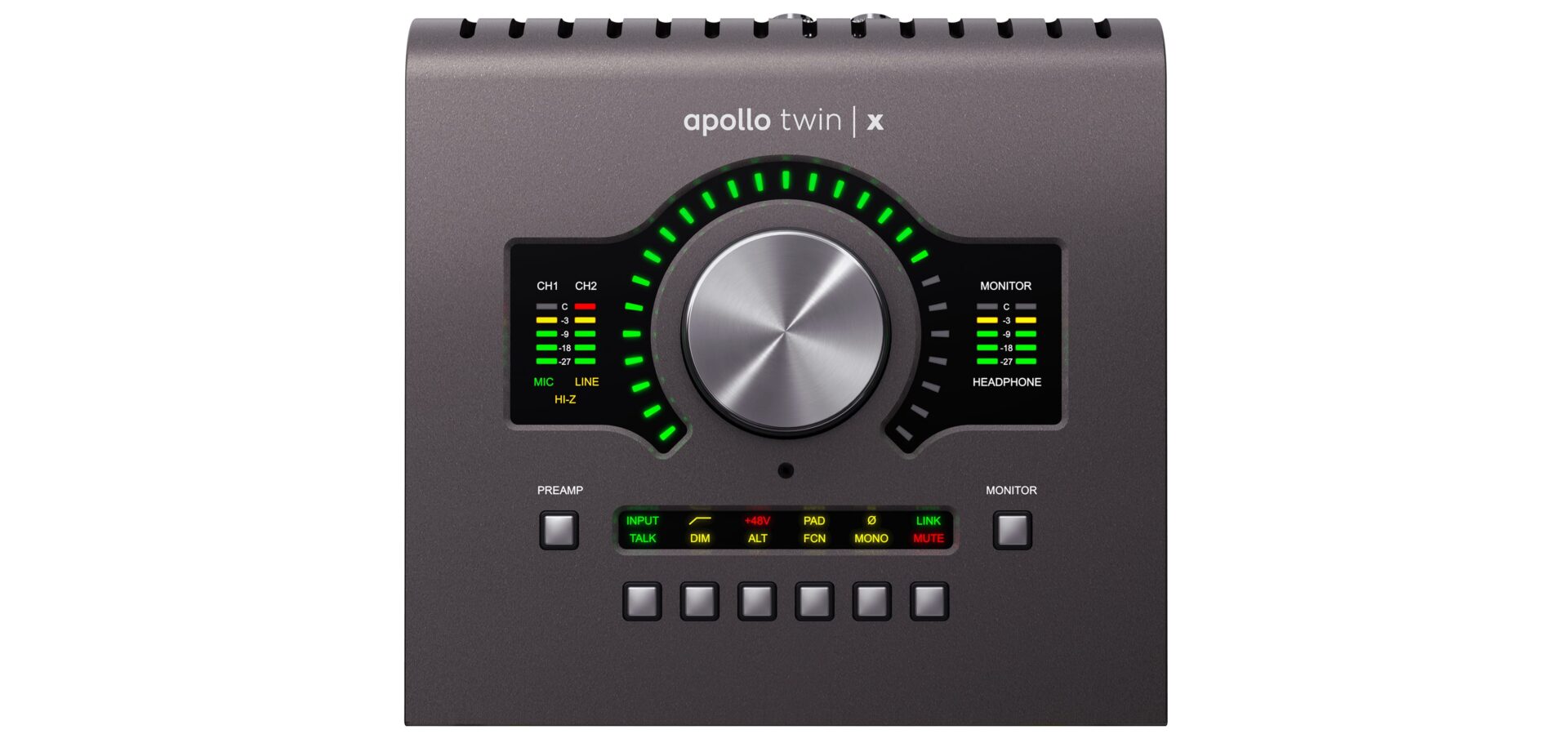
Universal Audio Apollo Twin X
Buy it new on Sweetwater, B&H, Thomann, or Amazon. Look for deals on Reverb.
Need a super flexible interface with the ability to record real time effects and give you extra DSP power for mixing? The Apollo Twin is one of the world’s leading 2-channel interfaces for serious small studios for good reason.
All of Universal Audio’s recording interfaces offer onboard processing power, UA’s Unison impedance-matching preamp modeling technology, the LUNA Recording System, top-tier A/D-D/A conversion, a wealth of industry-leading (manufacturer-endorsed) plugin emulations, and more. Despite its small size, the Apollo Twin X is no exception.
This compact Thunderbolt 3 interface sits squarely on your desktop and boasts a 10×6 I/O count. It features two Unison-enabled preamps, a 1/4″ instrument input, four balanced TRS outputs (two Monitor; two Line), a 1/4″ headphone out, as well as ADAT in for extra channels. (As an Apollo Twin owner myself, I find this feature especially crucial). It records at resolutions as high 24-bit/192kHz and is available in two tiers of extra DSP processing: QUAD or DUO Core.
For the uninitiated, the LUNA Recording System aims to bring the world of digital recording closer to the true analog workflow, offering integrated summing, onboard tape and console emulation, scores of UAD software instruments, and more. Its inclusion is not to be overlooked. See LUNA in action here. The importance of UA’s ever-expanding list of manufacturer-endorsed plugin emulations of the world’s most classic processors is not to be understated.
Apollo Twin X QUAD carries an MSRP of $1,699; the Twin X DUO is priced at $1,199.
Focusrite Clarett+ 2Pre

Focusrite Clarett+ 2Pre
Buy it new on Sweetwater, B&H, Thomann, or Amazon. Look for deals on Reverb.
If you don’t need quite as many bells and whistles, Focusrite’s Clarett series offers one of the best values for great sounding front end at an affordable price.
The Clarett+ 2Pre has its own brand of impedance switching with its two onboard preamps. This high-headroom, low-distortion, low-noise mic inputs emulate the classic Focusrite ISA 110. Not to be forgotten is Focusrite’s all-analogue “Air” circuitry available on each preamp which adds two cumulative 2 dB high-shelf boosts, for a total of 4 dB extra clarity up top.
In addition to its two mic preamps, the 10-in/4-out Clarett+ 2Pre offers two dedicated JFET instrument inputs (available via combi jacks), a high-power transparent headphone output, four line outputs, MIDI in/out jacks, and ADAT input for additional channels of input. In addition to a 12V power supply it can also operate bus-powered via a 15W USB-C connection. It records at resolutions up to 24-bit/192kHz.
Though no processing power on offer here, Focusrite packs its own powerful punch with included software via the Hitmaker Expansion pack, offering a wealth of plugins from industry-leading collaborators like Antares, Brainworx, Softube, and more. And also not to be overlooked is a membership to Focusrite’s Plug-In Collective, which offers ever-evolving discounts and free plugins from some of the industry’s most innovative developers. Lastly, the included Focusrite Control app enables you to adjust levels, monitor mixes, routing options, and more via your Mac, PC, or iOS device.
Clarett+ 2Pre is priced very attractively at $499.99.
For Dante-Audio-over-IP Network applications, check out the Focusrite RedNet X2P.
Antelope Audio Zen Q Synergy Core
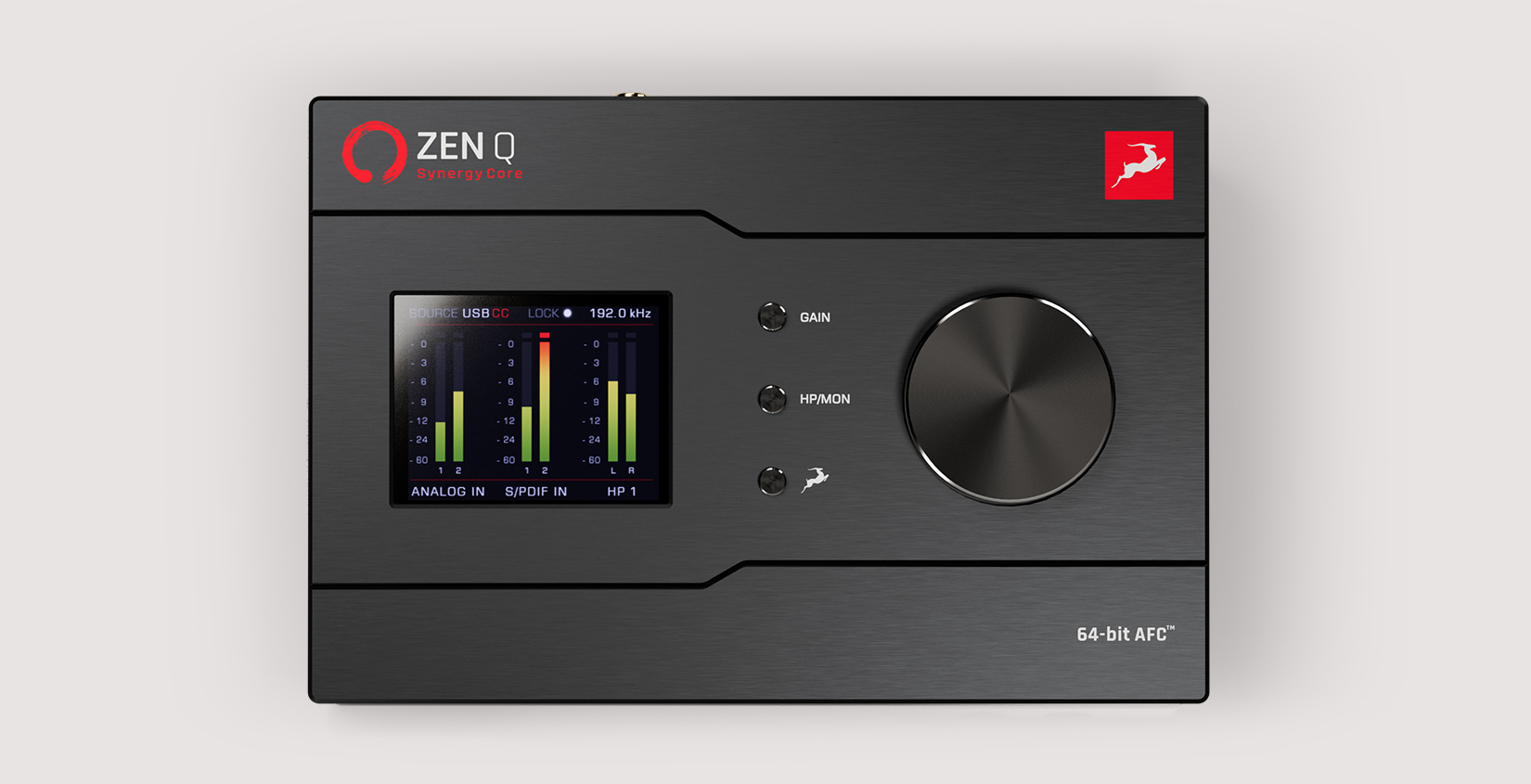
Antelope Audio Zen Q Synergy Core
Buy it new on Sweetwater, B&H, Thomann, or Amazon. Look for deals on Reverb.
Another great option for those who want extra DSP power for realtime effects and extra power in this mix is the Synergy Core line from Antelope. Their options often edge out Universal Audio on sticker price for a roughly comparable feature set and level of quality.
The Zen Q Synergy Core boasts its own powerful onboard analog-modeled, ultra-low latency effects processing, thanks to its FPGA and DSP chips.
The 14-in/10-out USB-C bus-powered unit features two discrete mic preamps (combi jacks with line/Hi-Z functionality), ADAT input, four line outputs, S/PDIF in/out, two dedicated 1/4″ instrument inputs, and two 1/4″ headphone outputs—all while boasting 64-bit AFC clocking functionality. It records at resolutions up to 24-bit/192kHz.
A total of 37 Synergy Core analog-modeled effects come bundled with the Zen Q, including emulations of some of the world’s most revered processors. Antelope’s onboard DSP is powered by their “afx2daw” app for real time recording with effects. These high-quality processors can only be easily unlocked inside your DAW by using their proprietary afx2daw Bridge plugin (sold separately). This makes it a slightly less seamless option than UAD’s plugins out of the box, and if you purchase the Bridge plugin, adds $200 to total cost, bringing the two options closer together in final price.
With other attractive features like Session Recall, Routing Recall, Loopback for Streaming, and more, the Zen Q Synergy Core brings much to the table. It carries an MSRP of $899.
Apogee Symphony Desktop
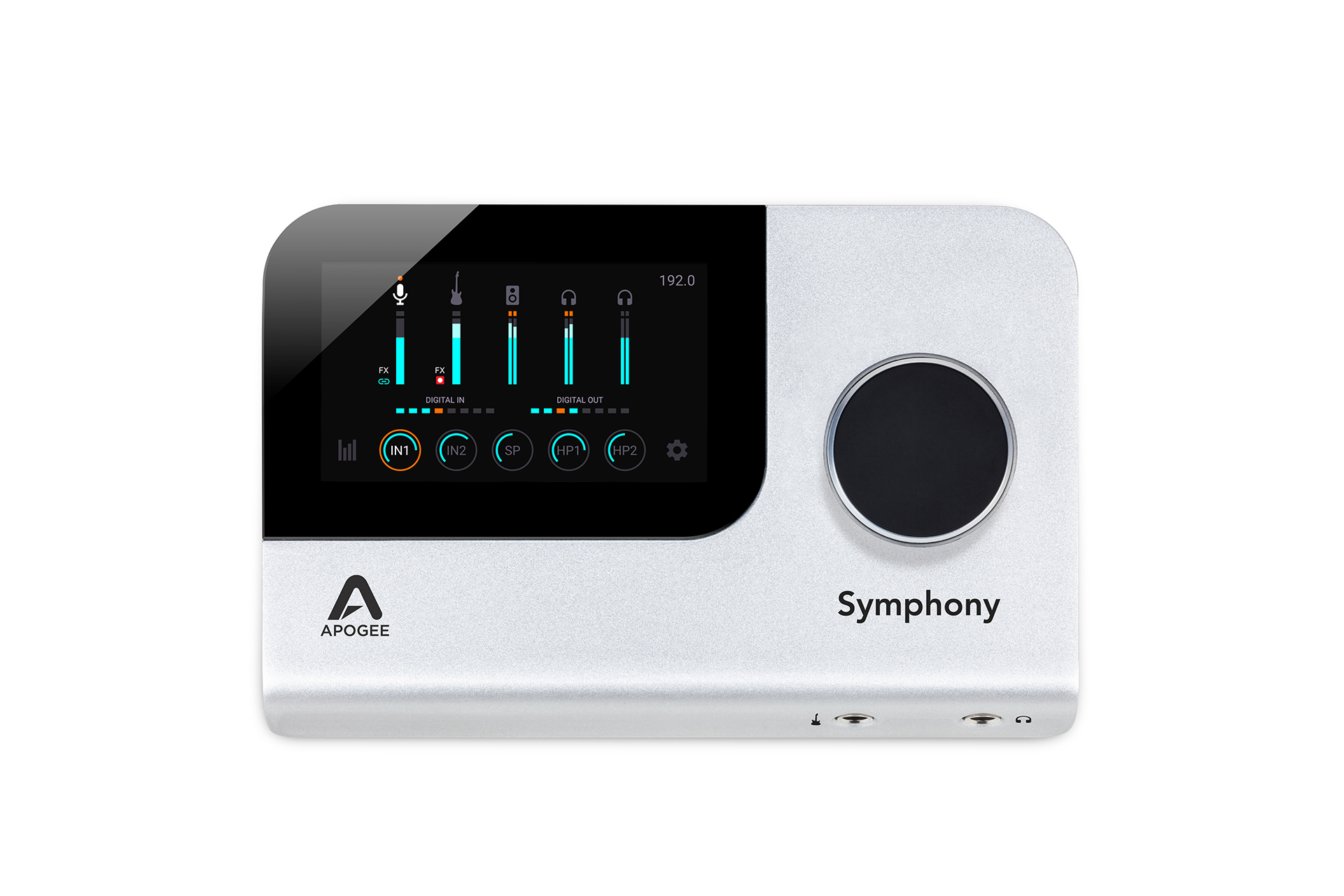
Apogee Symphony Desktop
Buy it new on Sweetwater, B&H, Thomann, or Amazon. Look for deals on Reverb.
The Symphony Desktop offers Apogee’s flagship conversion, along with vintage preamp emulation, onboard DSP, and a touchscreen interface—all on your desktop. Compatible with Mac, iPad Pro, and and Windows, this 10-in/10-out interface is the most accessible yet high-end offering Apogee has to date.
The Symphony Desktop has two preamps (available via combi jacks) featuring Apogee’s Alloy Mic Preamp Emulation technology, an FET instrument input with tube amp characteristics, two 1/4″ balanced outputs, two assignable headphone outputs (one 1/4″, one 1/8″), ADAT I/O, MIDI over USB, and USB-2 over USB-C connection.
You can offload select Apogee FX plugins to the Symphony Desktop, including emulations of some of the classic outboard pieces you would expect. Also included with the Symphony Desktop are some native plugins crafted in collaboration with legendary mixer Bob Clearmountain, such as the Symphony ECS Channel Strip and Clearmountain’s Spaces. These additions are not to be overlooked. Depending on your settings, the Symphony Desktop can record at resolutions up to 24-bit/96kHz.
MSRP for the Symphony Desktop is listed at $1,495.
RME Babyface Pro FS
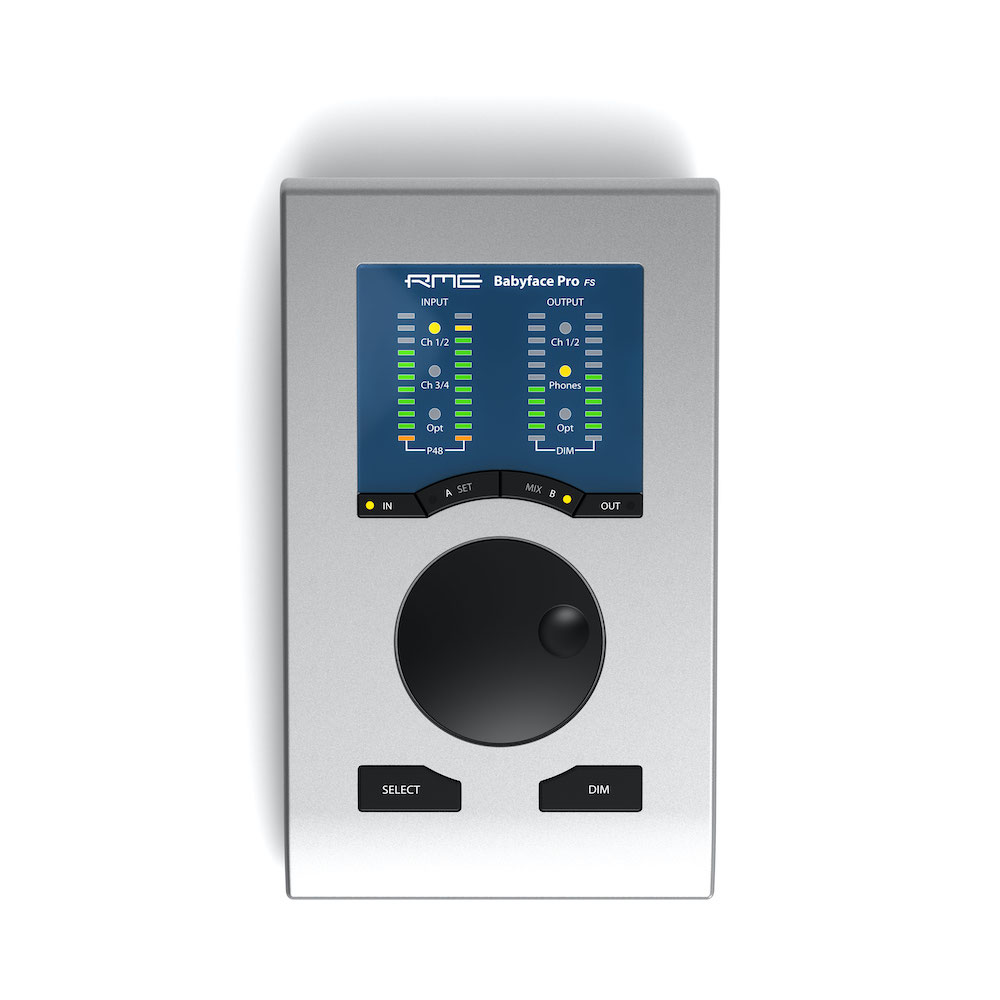
RME Babyface Pro FS
Buy it new on Sweetwater, B&H, Thomann, or Amazon. Look for deals on Reverb.
Capable of fitting in the palm of your hand, RME’s Babyface Pro FS offers the following in the way of I/O: four XLR jacks (two in, two out), two headphone outs (one 1/4″, one 1/8″), two 1/4″ line/instrument inputs, ADAT in/out, and one MIDI I/O port (MIDI breakout adapter included).
DC power is also available, though the unit can run stable on USB-3 power. Factoring in its ADAT functionality, Babyface Pro FS can run as a 12×12 interface.
Also notable on this unit is its clocking—RME’s SteadyClock FS to be precise. It’s the same circuit that is found in the ADI-2, a high end converter by RME. Rounding out the feature set is the inclusion of the TotalMix FX & TotalMix Remote software.
TotalMix FX enables you to independently route and mix input and playback channels to any output of your choice; TotalMix Remote gives you added control with Mac, PC, and iOS integration. The monitoring and routing capabilities offered here are some of Babyface Pro FS’ strongest features. The unit records at resolutions up to 24-bit/192kHz.
The RME Babyface Pro FS is listed at $999 MSRP.
Honorable Mentions
Avid Pro Tools | MTRX Studio
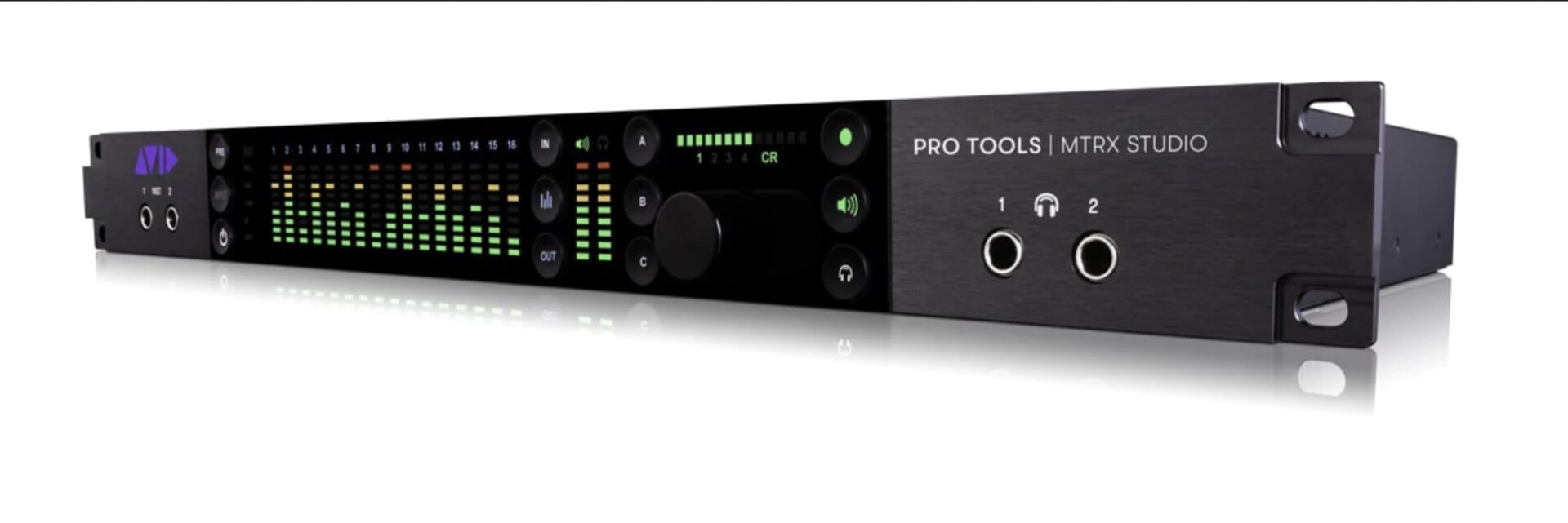
Avid Pro Tools | MTRX Studio
Buy it new on Sweetwater, B&H, Thomann, or Amazon. Look for deals on Reverb.
Certainly more expansive than anything mentioned previously, Avid’s Pro Tools | MTRX Studio offers a ton in the way of I/O, featuring Dante (64 channels), DigiLink, and ADAT connectivity on top of its two onboard analog preamps.
With ultra low-latency monitoring, speaker calibration, advanced control room monitoring and cue mix functionality, Dolby ATMOS integration, deep options for routing to your entire studio via the included DADman software (a collaboration between Avid and Digital Audio Denmark), and much more, this unit can serve as a full-featured centerpiece to your studio. It records at resolutions up to 24-bit/192kHz.
Avid Pro Tools | MTRX Studio carries a not-so-modest MSRP of $4,999.
SSL 2+
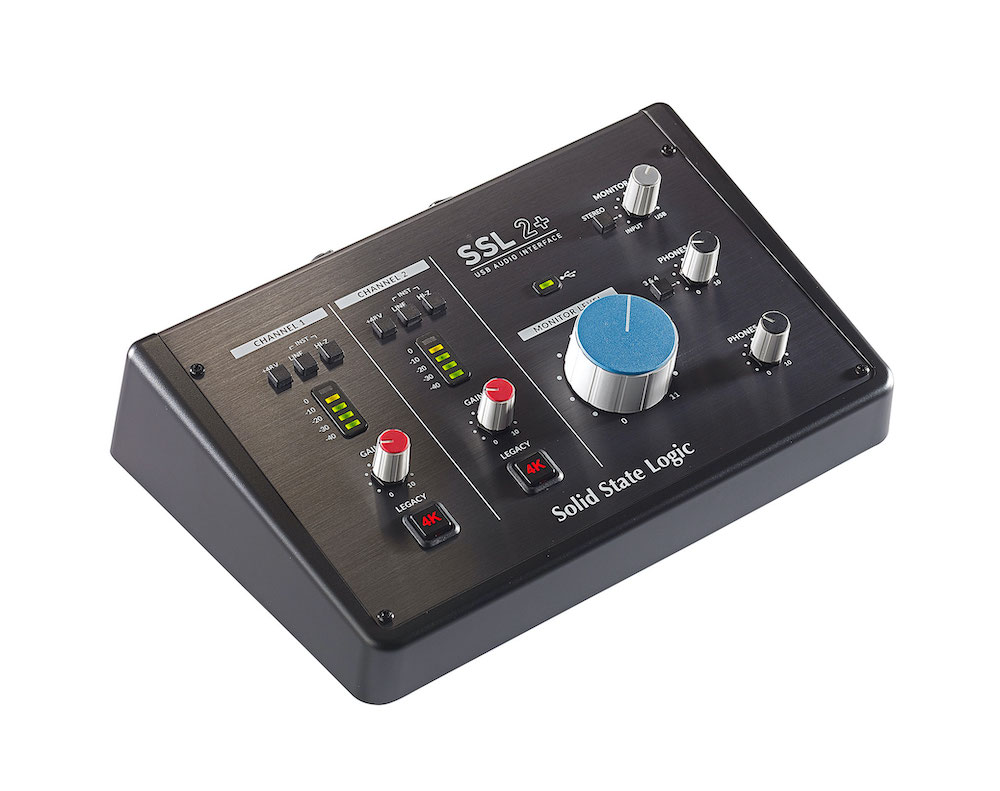
SSL 2+
Buy it new on Sweetwater, B&H, Thomann, or Amazon. Look for deals on Reverb.
With anything that bears the SSL name, one may think they’re about to dig pretty deep into their pockets, right? Wrong! For just $269.99, you can take the SSL name straight to your desktop.
Its two onboard preamps feature individual switches to engage SSL’s Legacy 4K “Analogue Enhancement Effect”, inspired by the famed SSL 4000 series consoles. This option adds both a “forward” high-frequency boost and subtle harmonic distortion to the channel on which it is inserted into. The SSL 2+’s preamps are available via combi jacks which also accept 1/4” instrument inputs.
On the output side, we’ve got two balanced 1/4″ outs for monitoring, two sets of stereo RCA outs, and two 1/4″ headphone outs. MIDI in/out is also accessible on the back panel, along with a USB-C port for USB 2.0 connectivity. The SSL 2+ records at resolutions up to 24-bit/192kHz.
The SSL 2+’s price point is worth reiterating: a very modest $269.99.
Audient iD14 MKII
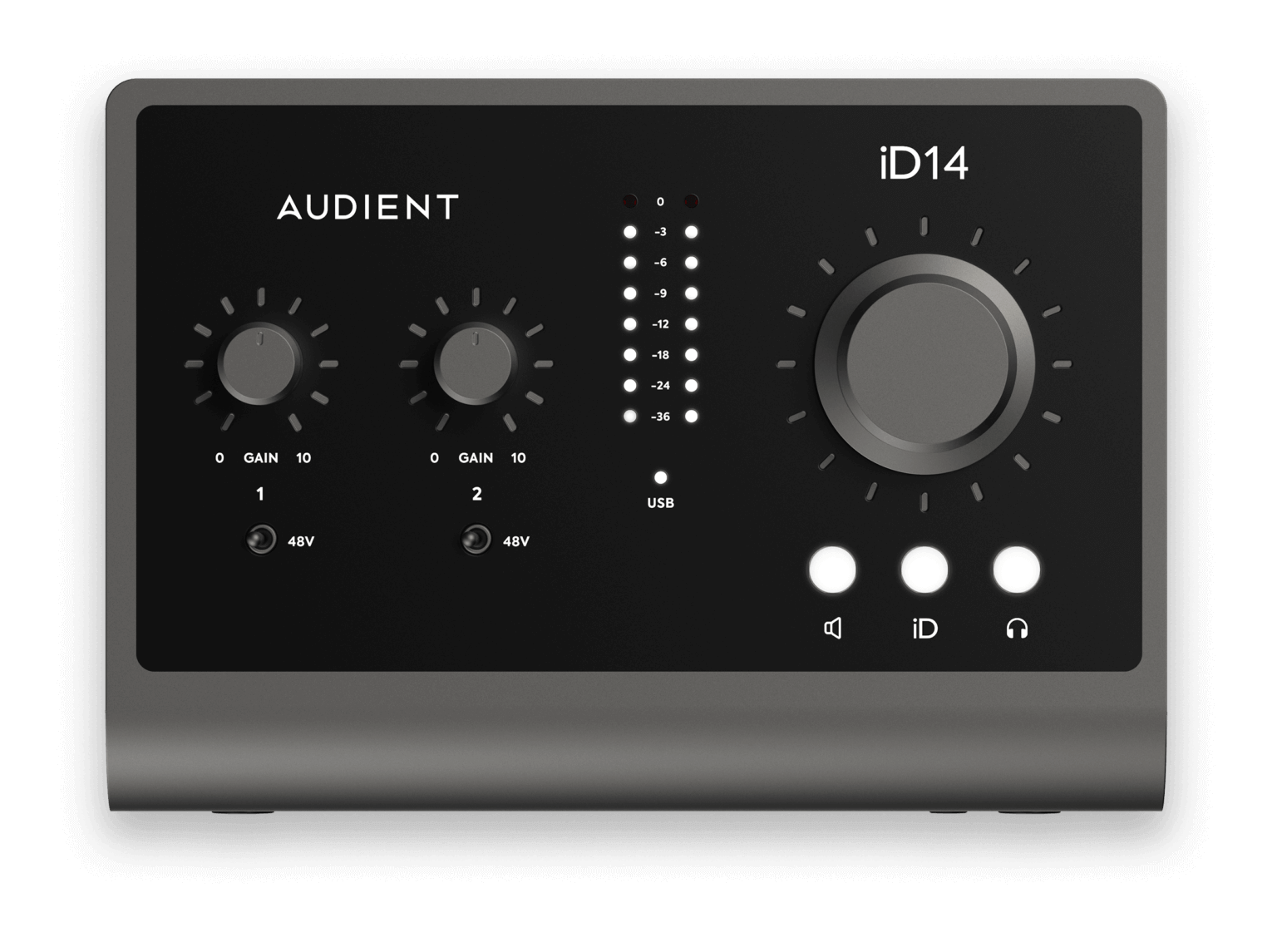
Audient iD14 MKII
Buy it new on Sweetwater, B&H, Thomann, or Amazon. Look for deals on Reverb.
The SSL 2+ is not the only unit in this roundup that won’t burn a hole in your wallet; Audient comes in with their iD14 at a very accessible $299.
It offers two onboard Audient console mic pres, one JFET instrument input, class-leading converters, and dual headphone outputs (one 1/4″, one 1/8″).
There are four 1/4″ analog outputs available on the iD14, and the unit also features a digital input supporting both ADAT and S/PDIF. Audient also offers their take on included free software and plugins here; the unit is bus-powered via USB-C (USB 3.0) and records at resolutions up to 24-bit/96kHz.
The iD14 is priced at $299.
Please note: When you buy products through links on this page, we may earn an affiliate commission.







